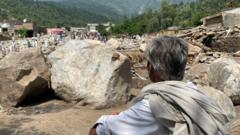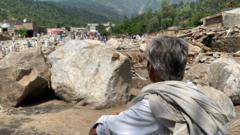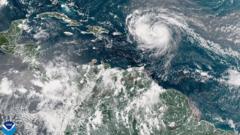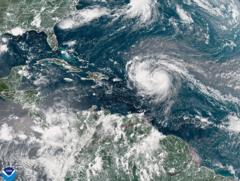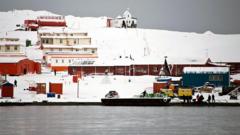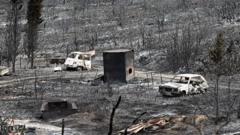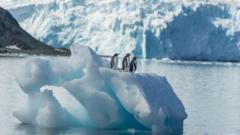Recent research indicates that saltier surface waters around Antarctica are contributing to faster melting of sea ice, raising concerns over global warming and potential sea-level rise.
Rising Salinity Near Antarctica Linked to Accelerating Sea Ice Loss

Rising Salinity Near Antarctica Linked to Accelerating Sea Ice Loss
A new study uncovers the impact of increased seawater salinity on Antarctic sea ice, shedding light on changes in global climate dynamics.
The effects of climate change are becoming ever more evident, particularly around Antarctica where recent studies highlight significant changes to the region’s sea ice patterns. A study published in the Proceedings of the National Academy of Sciences reveals that increases in salinity of the surface water are negatively impacting the stability of Antarctic sea ice. This finding contradicts the previously observed growth trend of Antarctic sea ice up until the 2010s.
Dr. Alessandro Silvano, a prominent figure in the research and a senior scientist at the University of Southampton, emphasizes the crucial role Antarctic sea ice plays in the broader context of global warming and potential extreme weather events. “The impact of Antarctic ice is massive in terms of sea-level rise, in terms of global warming, and therefore, in terms of extremes,” Silvano stated. The observed changes signal a shift towards a "new world," underscoring the urgency of understanding these complex climate dynamics.
Historically, the polar regions have demonstrated a unique cycle where sea ice undergoes seasonal melting in summer and refreezing in winter, serving to reflect sunlight and help stabilize the planet’s temperature. This cycle has been disturbed in recent decades, particularly in the Arctic, where sea ice levels have dramatically declined.
The study utilized satellite data to monitor subtle changes in sea surface brightness, a factor correlated with salt concentration. Initial doubts regarding the authenticity of the salinity increase were addressed as corroborating physical measurements from ocean instruments validated the findings.
As scientists further investigate these climate dynamics, understanding the interplay between salinity and ice levels will be crucial for predicting future environmental conditions. The research not only highlights the immediate implications for Antarctic ecosystems but also sets a precedent for how changes in one part of the earth’s climate system can influence global conditions.
Dr. Alessandro Silvano, a prominent figure in the research and a senior scientist at the University of Southampton, emphasizes the crucial role Antarctic sea ice plays in the broader context of global warming and potential extreme weather events. “The impact of Antarctic ice is massive in terms of sea-level rise, in terms of global warming, and therefore, in terms of extremes,” Silvano stated. The observed changes signal a shift towards a "new world," underscoring the urgency of understanding these complex climate dynamics.
Historically, the polar regions have demonstrated a unique cycle where sea ice undergoes seasonal melting in summer and refreezing in winter, serving to reflect sunlight and help stabilize the planet’s temperature. This cycle has been disturbed in recent decades, particularly in the Arctic, where sea ice levels have dramatically declined.
The study utilized satellite data to monitor subtle changes in sea surface brightness, a factor correlated with salt concentration. Initial doubts regarding the authenticity of the salinity increase were addressed as corroborating physical measurements from ocean instruments validated the findings.
As scientists further investigate these climate dynamics, understanding the interplay between salinity and ice levels will be crucial for predicting future environmental conditions. The research not only highlights the immediate implications for Antarctic ecosystems but also sets a precedent for how changes in one part of the earth’s climate system can influence global conditions.

